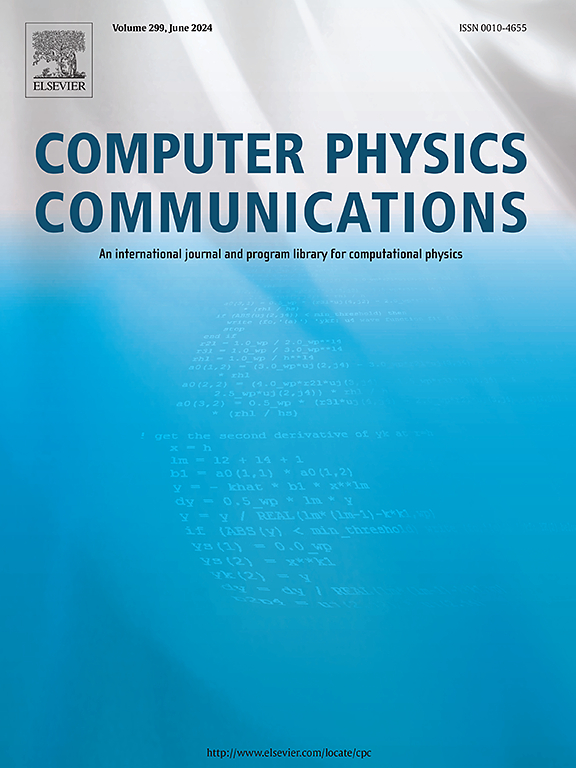Analytic model for the propagation of a collisionless neutral beam
IF 7.2
2区 物理与天体物理
Q1 COMPUTER SCIENCE, INTERDISCIPLINARY APPLICATIONS
引用次数: 0
Abstract
This paper introduces an analytical model for the propagation of collisionless neutral particles in neutral beam injection (NBI) systems. The model incorporates a novel approach using composite Gaussian basis functions to represent non-Gaussian source distributions and extends to two-dimensional source configurations under orthogonal separability assumptions. The method efficiently computes particle velocity and spatial distributions along beam trajectories, accounting for truncation effects due to transmission losses. The model has been implemented as a computational module in the Minerva framework and interfaced with the ITER Integrated Modelling & Analysis Suite (IMAS).
A case study of the MAST Upgrade NBI system demonstrates the model's ability to predict particle distributions from the source grid to the plasma cavity while accommodating detailed baffle geometries and calculating transmission factors. Comparisons reveal that reduced Gaussian basis representations can achieve an order-of-magnitude reduction in computational time with negligible impact on accuracy. The proposed model provides a fast and rigorous alternative to Monte Carlo simulations, enabling enhanced diagnostic modelling and efficient integration with Bayesian inference frameworks.
无碰撞中性光束传播的解析模型
本文介绍了中性束注入(NBI)系统中无碰撞中性粒子传播的分析模型。该模型采用了一种新方法,使用复合高斯基函数来表示非高斯源分布,并在正交可分性假设下扩展到二维源配置。该方法可有效计算粒子速度和沿光束轨迹的空间分布,并考虑到传输损耗引起的截断效应。该模型已作为Minerva框架中的一个计算模块实施,并与ITER集成建模与分析套件(IMAS)进行了接口。对MAST升级版NBI系统的案例研究表明,该模型能够预测从源网格到等离子体腔的粒子分布,同时适应详细的挡板几何形状并计算传输系数。比较结果表明,减小的高斯基表示法可以减少数量级的计算时间,而对精度的影响可以忽略不计。所提出的模型为蒙特卡洛模拟提供了一个快速而严谨的替代方案,能够增强诊断建模并与贝叶斯推理框架有效整合。
本文章由计算机程序翻译,如有差异,请以英文原文为准。
求助全文
约1分钟内获得全文
求助全文
来源期刊

Computer Physics Communications
物理-计算机:跨学科应用
CiteScore
12.10
自引率
3.20%
发文量
287
审稿时长
5.3 months
期刊介绍:
The focus of CPC is on contemporary computational methods and techniques and their implementation, the effectiveness of which will normally be evidenced by the author(s) within the context of a substantive problem in physics. Within this setting CPC publishes two types of paper.
Computer Programs in Physics (CPiP)
These papers describe significant computer programs to be archived in the CPC Program Library which is held in the Mendeley Data repository. The submitted software must be covered by an approved open source licence. Papers and associated computer programs that address a problem of contemporary interest in physics that cannot be solved by current software are particularly encouraged.
Computational Physics Papers (CP)
These are research papers in, but are not limited to, the following themes across computational physics and related disciplines.
mathematical and numerical methods and algorithms;
computational models including those associated with the design, control and analysis of experiments; and
algebraic computation.
Each will normally include software implementation and performance details. The software implementation should, ideally, be available via GitHub, Zenodo or an institutional repository.In addition, research papers on the impact of advanced computer architecture and special purpose computers on computing in the physical sciences and software topics related to, and of importance in, the physical sciences may be considered.
 求助内容:
求助内容: 应助结果提醒方式:
应助结果提醒方式:


